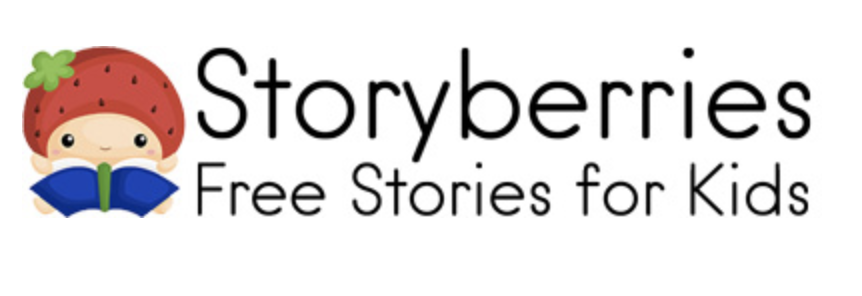

PROJECT
Tiny Tales
MY ROLE
UX/UI Design
Prototyping
Usability Testing
TOOLS
Sketch
Miro
Marvel
SUMMARY
I performed a five day design sprint to design an online resource library of stories and books for children for iPad and Tablet devices.
Parents want to be able to read to their young children- anytime, anywhere. They want to find books that are age-appropriate, educational, and engaging for their little ones.
PROBLEM
Tiny Tales is “an online resource containing a library of stories and books for young children, allowing parents to find a book to read to their child/children”. Parents often experience finding suitable books to be a difficult and time-consuming task. Tiny Tales is looking for a design solution to help parents in find appropriate stories in a quick amount of time that their children will love.
SOLUTION
Design the app with the use of filters, previews, features and intuitive design so that there is a way for parents to easily and efficiently find and select a book/story to read to their child/children that is age-appropriate, educational and engaging.
DESIGN CONSTRAINTS
Only available on an iPad and/or Tablet device.
There is a large library of author-submitted children’s stories/books already selected.
Tiny Tales is not an app where parents can purchase hardcopy/paper versions of the books.
TARGET USER
Parents that read to their children on a regular basis, iPad or Tablet users
Day 1: Understand & Map
RESEARCH
I gathered the research and interview notes given and created an affinity map to observe commonalities and develop insights of users.
Qualities users look for when searching for a story/book for their young children are that they are:
age appropriate
engaging (fun and exciting)
educational
relevant
Some frustrations are that:
finding a book can be time consuming
users sometimes have time constraints (and need a shorter book)
it can take a long time to find what users are searching for because they are looking for a specific theme, topic, title, author, etc.
SYNTHESIZING DATA
I then came up with some how might we questions and prepared to map out a possible end-to-end user journey the user may have with the product along with the end goal.
AFFINITY MAP
HOW MIGHT WE?
Find an age-appropriate book for our children in a sufficient amount of time?
Find a book/story that is of a subject that is interesting and exciting for your child?
Find a book/story that fits all of our desired qualities with ease and in little time?
Find a book/story that has educational value and something that the children are interested in?
Help parents find a book/story that isn’t too long or too short for their time constraints?
Help parents find the right book based on recommendations/reviews from others with children their age?
END-TO-END USER JOURNEY
Day 2: Lightning Demo & Solution Sketch
LIGHTNING DEMO
Before sketching out possible solutions, I conducted a lightning demo to see what sort of solutions other companies produced to solve a similar problem. I found three apps/websites to look at; Epic, Booka, and Storyberries. Investigating these apps/websites provided me with some inspiring ideas and also showed features I thought could be improved upon.
While Booka allows the user to search books by age and topic it doesn’t allow the user to select more than one topic at a time and the user isn’t able to search by length of the book and doesn’t inform the user how short/long a story is at all.
Epic gives users the ability to search books by age, grade level, topics and even offered options of books in different languages. The only feature it is missing is to allow the user to search by length of a book. However, it does inform the user how short/long the book is after selected.
Storyberries allows the user to search by age, time, topic, conversation, and type of book separately but it doesn’t allow the user to choose any of these features together (i.e. 10 min, fairy tale, for 4 year old). Also, there are no pictures for the stories besides the cover page, the rest of the story is presented in words only, which in my opinion makes the experience less engaging for children.
CRAZY 8’S
After viewing a few designs of similar websites and applications, I took a few mins to sketch out some possible screen ideas/solutions for my design. At first, I found this difficult to do but once I started, the ideas kept flowing. Even though none of them are perfect solutions, it got me exploring and thinking of things differently.
Day 3: Decide & Storyboard
SOLUTION SKETCH
Listening and reading information given from the interviews and research gathered, I knew I wanted to include several ways that users could navigate through the site to find a story. I wanted users to be able to search books by:
Title
Author
Topic
Age
Length of book/story (amount of time it takes to read)
Or a mix of any or all of these
I knew I wanted users to be able to share and save favorite stories for future app visits. I also wanted to organize the features a bit differently instead of having a navigation bar with icons.
STORYBOARD
I then sketched out the screens needed for users to hopefully reach their goal of finding a book that fits their desired criteria. I had a hard time figuring out if I wanted the search filters to be displayed on the first screen after the user logged in or not but in the end I thought that it would be most straightforward to the users so they know that these filters are available to them upfront and don’t have to go searching for them.
Day 4: Prototype
WIREFRAMES
Now that I had all of my ideas laid out, I was ready to create my prototype. I wanted the design to be fun, bright and friendly with the choices of colors, fonts and images. I also wanted the design to be simple, straightforward and intuitive for users to accomplish their goal as quickly and smoothly as possible.
INTERACTIVE PROTOTYPE
Day 5: Test & Validate
OVERVIEW OF PARTICIPANTS
Based on the target user group, I reached out to five participants. I then performed five remote moderated tests via the Zoom platform using Marvel for users to view the prototype created. Below is the overview of participants, all of which have children they read to on a regular basis.
T. S. - Mother of an 18 month old boy
D.W. - Mother of a 11 month old boy and four year old girl
J. A. - Mother of a 2 ½ year old boy and pregnant with another
K. S. - Mother of a 2 year old boy
S. J. - Mother of 5 year old and 7 year old girls
FINDINGS
All of my participants thought the app design was very straightforward and easy to understand. Overall, each participant was easily and efficiently able to complete the goal of finding a story/book that they could read to their little ones using the app design created, with just a few minor alterations to make it better.
Desired more topics especially the variety of topics as well.
Really liked the fact that you could search by length of the book (however one participant had mentioned that maybe “time” could be presented as a different word to describe that specific filter so it was more clear about what it was asking for), so maybe I could change it to “story length”.
Would have liked to have been able to type in a topic/conversation point in the search bar in addition to a specific title and/or author.
A few other features mentioned were a “bookmark” feature and a feature where the children could read the stories on their own as they grew a bit older.
INSIGHTS & TAKEAWAYS
I think the hardest part about testing is finding participants. I feel like I always struggle with this aspect, especially during the current situation with Covid. This sprint forced me to be a bit creative and reach out to people through people I knew with children to help me find people they knew because of their children, etc. Another thing I find difficult is creating the prototype so that it tests what you want it to test. It’s hard to deliver a product to people and say “use it as it were a real product” when multiple features don’t work/aren’t yet created. I find it’s more important to talk with the participants and walk through the prototype asking lots of questions as they use it so I can understand what they actually think while also explaining that some things won’t work as they want them to in the prototype.




